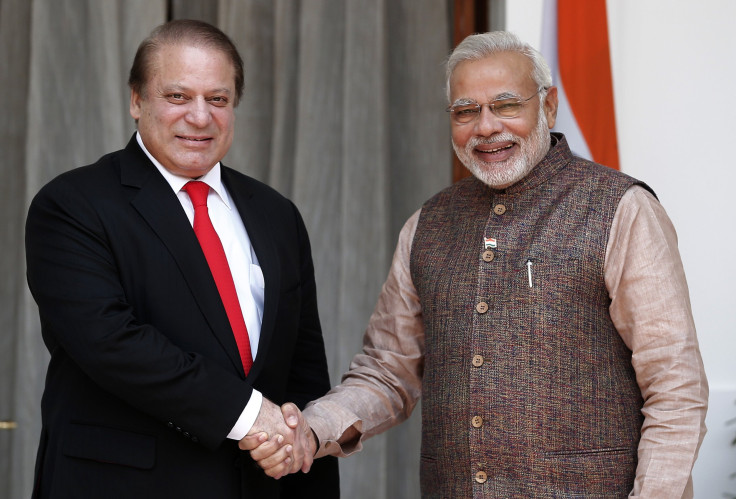Narendra Modi Heads To SAARC, But Will India-Pakistan Tensions Hold Summit To Ransom?

Late on Thursday evening, the Indian government announced that it had cleared three key proposals that could be signed during the upcoming summit of the South Asian Association for Regional Cooperation (SAARC), a grouping of eight countries.
India’s newly elected Prime Minister Narendra Modi will travel next week to Kathmandu, Nepal, for his first-ever SAARC summit, which, besides India and the host country, will be attended by the heads of governments of Pakistan, Bangladesh, Bhutan, Sri Lanka, Maldives and Afghanistan. And, Modi’s overtures to these countries are being seen by many analysts as India’s attempt to alter its regional power equation with China, to counter the latter’s so-called ‘string of pearls’ strategy in the Indian Ocean region.
“Attention to India’s neighborhood, including long-forgotten places such as Bhutan and Nepal, has improved India’s frayed regional standing,” The Financial Times noted.
OPTICS IN GEOPOLITICS
While one of the proposals cleared by India on Thursday could effectively allow seamless vehicular movement across the bloc's countries, another one, on energy cooperation, which had been in the works since 2010, is expected to “improve the power availability in the entire SAARC region.”
The Indian government also cleared an agreement between the railways of member countries that it says “will not only provide stimulus to the economic development in the region as a whole but also promote social and cultural contact and encourage tourism amongst the member states.”
But, these pacts will have to be agreed to bilaterally by member countries before they can take effect.
Ever since Modi assumed office in May this year after a landslide electoral victory, he has been courting India’s neighbors. He invited all the heads of SAARC countries to his swearing-in and followed this up with visits to Bhutan and Nepal, and just last week, to Myanmar, which had earlier sought membership in the bloc. In January, he is expected to visit Sri Lanka.
In geopolitics, optics matter, and Modi knows that. In June, he reportedly asked the Indian Space Research Organisation to develop a "SAARC Satellite" to be given away as a gift to India’s neighbors.
“Such a satellite will be helpful in SAARC nations’ fight against poverty and illiteracy, the challenge to progress in scientific field, and will open up avenues to provide opportunities to the youth of SAARC countries,” he said at the time, according to the Press Trust of India, cited by The Hindu newspaper.
HOSTAGE TO HISTORY
The first SAARC summit was held in December 1985, and since then, has often been hostage to the tenuous relationship between its two biggest members and arch rivals, India and Pakistan. In fact, after Pakistan’s Prime Minister Nawaz Sharif met Modi in New Delhi in May, the two countries had announced the resumption of a foreign secretary-level engagement, which India called off in August, after the Pakistani High Commissioner to Delhi met with Kashmiri separatist leaders.
The India-Pakistan equation is key to intra-regional trade among SAARC countries. Their rivalry has meant that countries within the bloc have had a dismal record when it comes to trading among themselves. While the annual official trade between the two countries is about $2.7 billion, a 2012 report by the Federation of Chambers of Commerce and Industry estimated that informal trade between the two neighbors stood at $10 billion.
Several other regional groups that have developing countries among their members have in fact fared much better when it comes to trading among themselves.
“During 2009-11 the share of intra-regional trade in total world trade of the member countries of SAARC (the South Asian Association for Regional Cooperation) was 5.2%, compared to ASEAN (the Association of Southeast Asian Nation): 26.5; COMSEA (the Common Market for Easters and South Africa): 22.3%; and MERCOSUR (the Southern Common Market): 20.5%,” according to an academic paper on trade prepared by the United Nations Conference on Trade and Development.
Moreover, though India accorded Pakistan the so-called “Most Favored Nation” status in 1996, the latter has not reciprocated even after having promised it in September 2012.
As a trading bloc, however, SAARC appears not to have done too badly. In fact, one look at comparative trade data begs the question as to why SAARC does not take itself more seriously. Figures available with the European Commission reveal that between 2003 and 2013, SAARC as a trading bloc had a positive balance of trade with its single-largest trading partner, the European Union.
Although few believe that SAARC can turn itself around, nearly three decades after it was formed, Modi, riding on the back of a strong political mandate can certainly try to give the still fledgling group a chance.
© Copyright IBTimes 2025. All rights reserved.





















